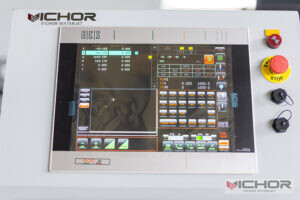
The Water Jet: Transforming Modern Manufacturing and Beyond
In the realm of industrial technology, few innovations have made as significant an impact as the water jet. This powerful tool harnesses the force of high-pressure water to cut through a vast array of materials with precision and efficiency. From intricate designs in aerospace to robust components in construction, the water jet has become an indispensable asset across various sectors. Its ability to operate without generating heat or altering material properties sets it apart from traditional cutting methods like lasers or plasma cutters. As industries increasingly prioritize sustainability and precision, understanding the water jet becomes crucial. This article delves into five key aspects of the water jet, providing a comprehensive overview of its mechanics, applications, benefits, challenges, and future potential. By exploring these facets, we can appreciate why the water jet continues to revolutionize manufacturing and beyond, offering solutions that are both innovative and environmentally conscious.
How the Water Jet Operates: The Mechanics Behind the Power
At its core, the water jet relies on a straightforward yet highly effective principle: using pressurized water to erode materials. The process begins with a high-pressure pump that intensifies water pressure to extreme levels, often exceeding 60,000 psi (pounds per square inch). This pressurized water is then forced through a small nozzle, typically made from durable materials like sapphire or diamond, which focuses the stream into a thin, high-velocity jet. When abrasive substances, such as garnet, are added to the water stream, the water jet can cut through harder materials like metals, ceramics, and composites. The entire system is controlled by computer numerical control (CNC) technology, ensuring precise movements and accurate cuts based on digital designs. This combination of pressure, velocity, and abrasives allows the water jet to achieve clean edges without thermal distortion, making it ideal for heat-sensitive materials. Moreover, the simplicity of the water-based process reduces the risk of contamination, which is vital in industries like food processing or medical device manufacturing. By mastering these mechanics, operators can leverage the water jet for tasks ranging from simple shapes to complex geometries, all while maintaining high efficiency and minimal waste.
Applications of the Water Jet Across Industries
The water jet boasts a remarkably versatile range of applications, spanning numerous industries due to its adaptability and precision. In manufacturing, it is commonly used for cutting metals, plastics, and composites in automotive and aerospace sectors, where tight tolerances are essential. For instance, the water jet can fabricate engine components or aircraft parts without compromising material integrity. In the art and design world, artists employ the water jet to create intricate sculptures and architectural elements from stone, glass, or metal, thanks to its ability to produce detailed curves and patterns. The construction industry benefits from the water jet in tasks like tile cutting, demolition, and shaping structural materials, as it reduces dust and noise pollution compared to traditional methods. Additionally, in food processing, the water jet is utilized for slicing products like fruits, vegetables, and baked goods without crushing or bruising, ensuring hygiene and preserving quality. Even in environmental sectors, the water jet aids in cleaning and maintenance, such as removing coatings from surfaces or clearing debris from pipelines. This broad applicability underscores how the water jet adapts to diverse needs, driving innovation and efficiency across fields.
Advantages of Using the Water Jet in Daily Operations
One of the most compelling reasons for adopting the water jet is its array of advantages that enhance productivity and sustainability. Firstly, the water jet operates without generating heat, eliminating the risk of heat-affected zones (HAZ) that can weaken materials or alter their properties. This cold-cutting process is particularly beneficial for metals and composites that are sensitive to temperature changes. Secondly, the water jet is highly versatile, capable of cutting virtually any material, from soft foams to hardened steels, without the need for tool changes or extensive setup. This flexibility reduces downtime and increases operational efficiency. Thirdly, the water jet is environmentally friendly, as it primarily uses water and natural abrasives, minimizing hazardous waste and emissions. The water can often be recycled within closed-loop systems, conserving resources and aligning with green manufacturing practices. Fourthly, the precision of the water jet allows for minimal material waste, as it produces narrow kerf widths and can nest parts closely together, optimizing raw material usage. Lastly, safety is enhanced with the water jet, as it reduces exposure to harmful fumes, sparks, or sharp tools, creating a safer workplace. These benefits collectively make the water jet a cost-effective and reliable choice for businesses aiming to improve their bottom line while adhering to environmental standards.
Challenges and Limitations of the Water Jet Technology
Despite its many strengths, the water jet is not without challenges and limitations that users must consider. One significant issue is the operating cost, which can be higher than other cutting methods due to the consumption of high-pressure pumps, abrasive materials, and nozzle replacements. The abrasive used in the water jet, such as garnet, adds to ongoing expenses and requires proper disposal to avoid environmental impact. Another limitation is the speed of cutting; while the water jet excels in precision, it may be slower than laser or plasma cutters for certain thick or hard materials, potentially affecting high-volume production timelines. Maintenance is also a concern, as the high-pressure components and nozzles are subject to wear and tear, necessitating regular inspections and part replacements to ensure consistent performance. Additionally, the water jet can produce a tapered edge on thicker materials, which might require secondary finishing processes to achieve desired tolerances. Noise and water management are practical challenges too; the system can be loud, and managing the water runoff, especially when mixed with abrasives, demands efficient filtration and recycling setups. By acknowledging these limitations, operators can better plan for integrating the water jet into their workflows, balancing its advantages with potential drawbacks to maximize overall efficiency.
Future Trends and Innovations in Water Jet Development
The evolution of the water jet continues to unfold with exciting trends and innovations that promise to expand its capabilities and accessibility. One emerging trend is the integration of artificial intelligence (AI) and machine learning into the water jet systems, enabling predictive maintenance, real-time adjustments, and optimized cutting paths for enhanced precision and reduced waste. Another innovation focuses on improving energy efficiency, with developments in pump technology that lower power consumption while maintaining high pressure, making the water jet more sustainable and cost-effective. Researchers are also exploring new abrasive materials and water jet formulations that could increase cutting speeds and extend nozzle life, addressing some of the current limitations. In terms of applications, the water jet is being adapted for additive manufacturing and 3D printing processes, where it can be used for trimming or shaping printed objects with high accuracy. Furthermore, the rise of portable and compact water jet models is making this technology more accessible to small businesses and fieldwork, democratizing its use across various sectors. As industries push for smarter, greener solutions, the water jet is poised to play a pivotal role in the future of manufacturing, driven by continuous research and adaptation to market needs.
In conclusion, the water jet stands as a transformative technology that has reshaped how we approach cutting and fabrication across multiple industries. Its unique mechanics, broad applications, and numerous advantages make it a valuable tool for achieving precision, efficiency, and sustainability. While challenges like cost and maintenance exist, ongoing innovations are steadily addressing these issues, ensuring that the water jet remains at the forefront of industrial advancement. By embracing this technology, businesses can not only enhance their operational capabilities but also contribute to a more environmentally conscious future. As we look ahead, the potential for the water jet to integrate with emerging technologies promises even greater breakthroughs, solidifying its role as a cornerstone of modern manufacturing and beyond.
Frequently Asked Questions About the Water Jet
Q1: What is a water jet and how does it differ from other cutting methods?
A1: A water jet is a tool that uses high-pressure water, often mixed with abrasives, to cut through materials. Unlike thermal methods like lasers or plasma cutters, the water jet operates without heat, preventing material distortion and making it ideal for heat-sensitive substances. This cold-cutting process also reduces the risk of fumes or sparks, enhancing safety and versatility.
Q2: What materials can a water jet cut effectively?
A2: The water jet can cut a wide range of materials, including metals (like steel and aluminum), plastics, glass, ceramics, stone, composites, and even food products. Its adaptability comes from the ability to adjust pressure and add abrasives, allowing it to handle everything from soft, delicate items to hard, durable surfaces with precision.
Q3: Are there any environmental benefits to using a water jet?
A3: Yes, the water jet offers several environmental advantages. It primarily uses water and natural abrasives, which are less harmful than chemicals or gases used in other methods. Many systems incorporate water recycling to minimize waste, and the process produces no hazardous fumes or radiation, aligning with sustainable manufacturing practices.
Q4: What are the main maintenance requirements for a water jet system?
A4: Regular maintenance for a water jet includes inspecting and replacing worn nozzles, checking high-pressure pumps for leaks, and ensuring the abrasive delivery system is clean. Filters for water and abrasives should be monitored to prevent clogs, and the CNC controls need periodic calibration. Proper upkeep helps maintain cutting accuracy and extends the system’s lifespan.
Q5: Can a water jet be used for intricate designs and detailed work?
A5: Absolutely. The water jet is highly capable of producing intricate designs and fine details due to its precise CNC control and narrow jet stream. It can cut complex shapes, sharp corners, and delicate patterns without tool wear, making it popular in industries like art, jewelry, and aerospace for tasks requiring high accuracy and minimal material damage.
continue reading
Related Posts
- 1469 words7.4 min read
- 1821 words9.2 min read


